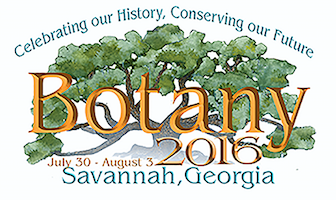| Abstract Detail
Symbioses: Plant, Animal, and Microbe Interactions Garcia, Michelle [1], Moody, Michael [2]. Initial discoveries in the phytobiomes of two achlorophyllous plants in the Madrean Archipelago. Plant-associated microbial communities found in the rhizosphere (below ground) and the phyllosphere (above ground), together referred to as the phytobiome, may play an essential role in determining host plant vigor and potential to colonize new areas. Though we have long been aware or the complex relationship between plants and their microbiota, the advent of next generation sequencing (NGS) technology has made it possible to explore patterns of coevolution and community assemblage more thoroughly. The Madrean Archipelago (SW Sky Islands) is a sky island complex in Southwest North America which runs from the Sierra Madre Occidental in Mexico to the Mogollon Rim in northern Arizona. This region exhibits high levels of biodiversity and serves as an ecotone of several biological communities. Climatic variations, elevational gradients, and historical aridification have led to isolation among mountain ranges, creating an ideal setting for studying microbial community specificity both between species and populations of species. Plant-microbe interactions are particularly important in achlorophyllous plants which often rely on mycorrhizal interactions for germination and nutrient uptake. Several achlorophyllous taxa can co-occur across the disjunct sky Island complex. Here, I use NGS and a targeted metagenomics approach to investigate the differences between microbial communities of the phytobiomes of Corallorhiza maculata, a highly variable species complex of mycoheterotrophic orchids, and Monotropa hypopitys, a species of achlorophyllous mycoheterotroph in the family Ericaceae, with a focus on the bacterial and fungal communities. Additionally, microbial communities were compared between two discreet populations of C. maculata. Plants were obtained from two separate sky islands in New Mexico and DNA was extracted and sequenced from three separate structures of each plant: the rhizome, the stem and the fruit. Sequences were then compared against database sequences for identification. The ITS region was used to identify fungal inhabitants and the 16s rRNA gene was used to identify bacterial inhabitants. This work is among the first characterizations of phytobiome inhabitants among achlorophyllous plants in the SW Sky Island region.
Log in to add this item to your schedule
1 - The University of Texas at El Paso, Department of Biological Sciences, 500 W. University Ave, El Paso, Texas, 79902, United States
2 - University Of Texas At El Paso, Department Of Biology, 500 W. University Ave., Bioscience Bldg 2.120, El Paso, TX, 79968, USA
Keywords:
phytobiome
Corallorhiza maculata
Monotropa hypopitys
sky islands
Symbiosis.
Presentation Type: Poster
Session: P, Symbioses: Plant, Animal, and Microbe Interactions Posters
Location: Exhibit Hall/Savannah International Trade and Convention Center
Date: Monday, August 1st, 2016
Time: 5:30 PM This poster will be presented at 6:15 pm. The Poster Session runs from 5:30 pm to 7:00 pm. Posters with odd poster numbers are presented at 5:30 pm, and posters with even poster numbers are presented at 6:15 pm.
Number: PSB004
Abstract ID:359
Candidate for Awards:None |



